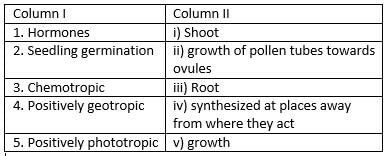Biology Mock Test- 5 - Class 10 MCQ
30 Questions MCQ Test - Biology Mock Test- 5
In Hydra and Amoeba, ammonia is the main nitrogenous waste. Lizards, snakes, birds and insects excrete mostly uric acid but crocodiles and alligators excrete mainly ammonia through they are reptiles. So can we generalise that :-
The ability of a cell to divide into several cells during reproduction in Plasmodium is called
What marks the beginning of the reproductive life of a woman?
The narrowest and most numberous tubes of lungs are termed as –
Read the passage and answer the following questions:
There were three animals: A, B and C. Animal A can fly but animal B can only run on ground or walls. However, the forelimbs of animal A and B, both have the same basic design but they were used for different purposes such as flying and running respectively. The animal C became extinct a long time ago. The study of fossils of animal C tells us that it had some features like those of A and some like those of B. In fact, animal C is said to form a connecting link in the evolutionary chain of A and B.
Q. The animal C is
In a neuron, conversion of electrical signal to a chemical signal occurs at/ in
In case the ova does not fertilise, which of the following events will take place?
The process in which the nucleus first divides amitotically into two followed by the division of the cytoplasm is called
Read the passage and answer the following questions:
There were three animals: A, B and C. Animal A can fly but animal B can only run on ground or walls. However, the forelimbs of animal A and B, both have the same basic design but they were used for different purposes such as flying and running respectively. The animal C became extinct a long time ago. The study of fossils of animal C tells us that it had some features like those of A and some like those of B. In fact, animal C is said to form a connecting link in the evolutionary chain of A and B.
Q. Which is the correct evolutionary chain involving A, B and C.




















